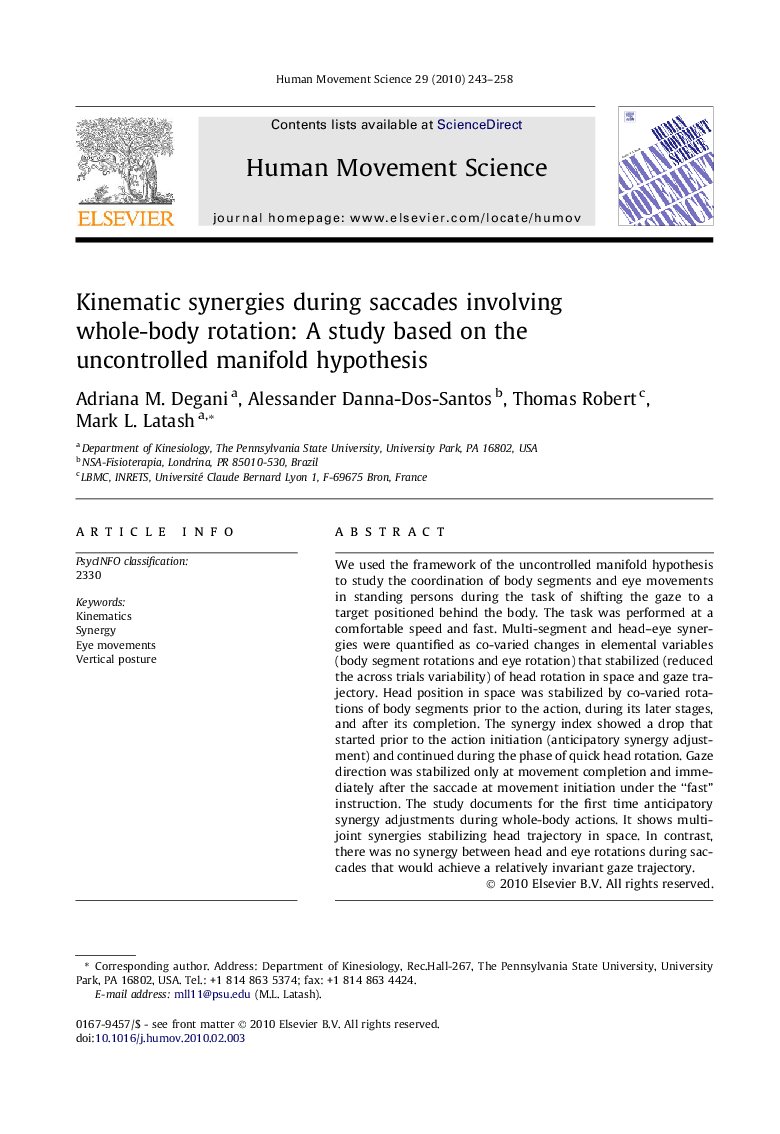| Article ID | Journal | Published Year | Pages | File Type |
|---|---|---|---|---|
| 928729 | Human Movement Science | 2010 | 16 Pages |
We used the framework of the uncontrolled manifold hypothesis to study the coordination of body segments and eye movements in standing persons during the task of shifting the gaze to a target positioned behind the body. The task was performed at a comfortable speed and fast. Multi-segment and head–eye synergies were quantified as co-varied changes in elemental variables (body segment rotations and eye rotation) that stabilized (reduced the across trials variability) of head rotation in space and gaze trajectory. Head position in space was stabilized by co-varied rotations of body segments prior to the action, during its later stages, and after its completion. The synergy index showed a drop that started prior to the action initiation (anticipatory synergy adjustment) and continued during the phase of quick head rotation. Gaze direction was stabilized only at movement completion and immediately after the saccade at movement initiation under the “fast” instruction. The study documents for the first time anticipatory synergy adjustments during whole-body actions. It shows multi-joint synergies stabilizing head trajectory in space. In contrast, there was no synergy between head and eye rotations during saccades that would achieve a relatively invariant gaze trajectory.
